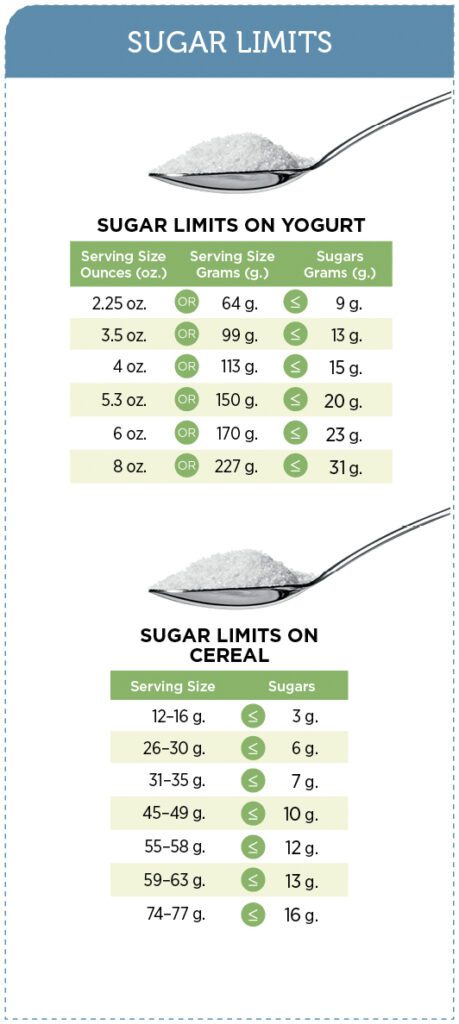The Child and Adult Care Food Program (CACFP) serves children, older adults and individuals with chronic disabilities. According to the United States Department of Agriculture Food and Nutrition Services, it’s a broad program, supporting nutritionally balanced meals and snacks for over 3.3 million children and approximately 120,000 adults in an average day.
While the CACFP has been around since 1968, an updated meal pattern went into effect October 1, 2017, the first major modification since the program’s inception. Intended to better align with the Dietary Guidelines for Americans (as part of the requirements by the 2010 Healthy, Hunger-Free Kids Act), the changes focus on serving more whole grains, serving a broader variety of fruits and vegetables and decreasing added sugar.
Here’s an overview of the meal pattern changes and what they mean for your operation, along with best practices recommended by the United States Department of Agriculture.
More whole grains
In order to be compliant, at least one serving of grains per day must be whole-grain rich. Any of the following four methods can be used to verify that an item is whole-grain rich.
- There is a label that states “whole grain” or “whole wheat.”
- The first ingredient or the second ingredient after water is “whole grain” and the next two ingredients are creditable. Non-creditable ingredients include durum, white flour, wheat starch, corn starch, modified food starches and vegetable flours.
- The product includes one of the following Food and Drug Administration approved whole grain health claims on its packaging:
- “Diets rich in whole grain foods and other plant foods and low in total fat, saturated fat, and cholesterol may reduce the risk of heart disease and some cancers.”
- “Diets rich in whole grain foods and other plant foods, and low in saturated fat and cholesterol, may help reduce the risk of heart disease.”
- You have received proper and verifying documentation from the manufacturer.
Although it is the discretion of the state agency to decide what documentation is acceptable to prove compliance with this requirement, Food and Nutrition Services recommends stating whole-grain rich items on the menu itself to simplify verification.
Any grain that is not whole-grain rich and served as part of the CACFP must be enriched in order to be reimbursable. In order to verify an item is enriched the label must state “enriched,” the first ingredient listed is proceeded with the word “enriched,” or the grain must be listed with a corresponding sub-list of enriched ingredients (i.e., niacin, thiamine, folic acid, riboflavin, iron).
Additionally, grain-based desserts no longer count toward the grain component. Grain-based desserts are defined using categories rather than specific nutrient criteria and include:
- Cookies
- Dessert pies
- Cobblers
- Fruit turnovers
- Doughnuts (frosted, glazed or unfrosted)
- Sweet rolls (frosted and unfrosted)
- Toaster pastries (frosted and unfrosted)
- Cereal bars
- Breakfast bars
- Granola bars
- Cakes (all varieties)
- Coffee cakes
- Brownies
Assuming no further changes take place, starting October 1, 2019, all grains will be credited using ounce equivalents instead of serving or portion, such as ½ slice (of bread), ½ cup, 1 serving (of dinner roll). This change is consistent with the Dietary Guidelines for Americans and the National School Lunch Program.
Increasing the variety of fruits and vegetables
Per the October 1, 2017, update, the combined fruit and vegetable component is now a separate vegetable component and a separate fruit component. Juice also is limited to once per day.
Decreasing added sugar
This change focuses specifically on yogurt and cereal. Yogurt must contain no more than 23 grams of sugar per 6 ounces and cereal must contain no more than 6 grams of sugar per dry ounce to be CACFP-eligible. See the charts below for reference.

CACFP best practices
Though optional, these best practices offer homes, centers and day care facilities the opportunity to further improve on the nutritional quality of food they serve. They reflect recommendations from the Dietary Guidelines for Americans and the National Academy of Medicine.
Vegetables and fruit
- Make at least 1 of the 2 required components of a snack a vegetable or a fruit
- Serve a variety of fruits and choose whole fruits (fresh, canned, dried or frozen) more often than juice
- Provide at least one serving each of dark green vegetables, red and orange vegetables, beans and peas (legumes), starchy vegetables and other vegetables once per week
Grains
- Provide at least two servings of whole grain-rich grains per day
Meat and meat alternates
- Serve only lean meats, nuts and legumes
- Limit processed meats to one serving or less per week
- Serve only natural cheeses and choose low-fat or reduced fat varieties
Milk
- Serve only unflavored milk
- If serving flavored milk to children 6 years old and older, or adults, select and serve flavored milk that contains no more than 22 grams of sugar per 8 fluid ounces
- Serve water as a beverage when serving yogurt in place of milk for adults
Additional best practices
- Incorporate seasonal and locally produced foods into meals
- Limit purchased pre-fried foods to one serving or less per week
- Avoid serving non-creditable foods that are sources of added sugars, such as sweet toppings (e.g., honey,jam, syrup), mix-in ingredients sold with yogurt (e.g., honey, candy, or cookie pieces) and sugar-sweetened beverages (e.g., fruit drinks or sodas)
- Adult day care centers should offer and make water available to adults upon their request, throughout the day












